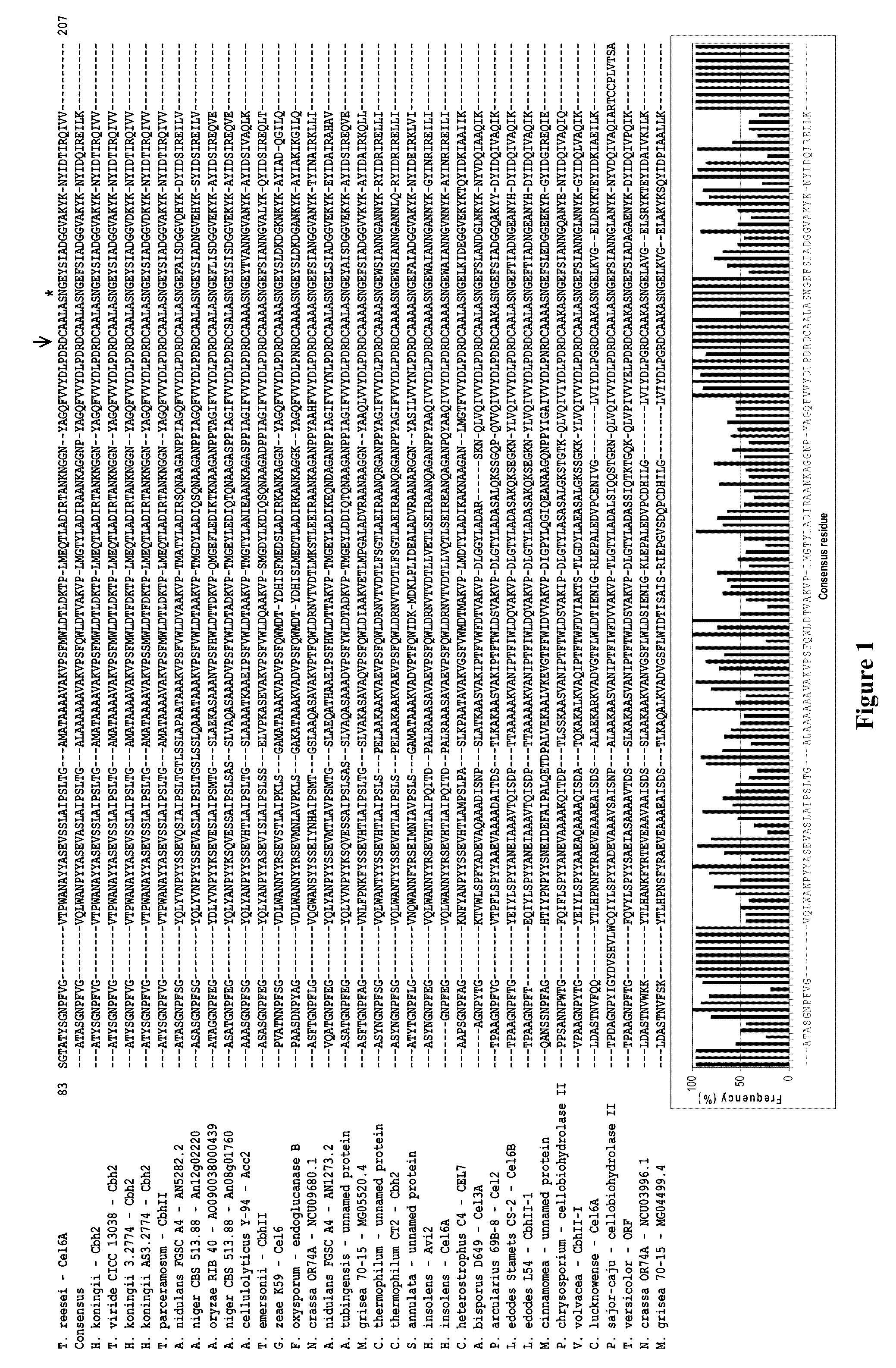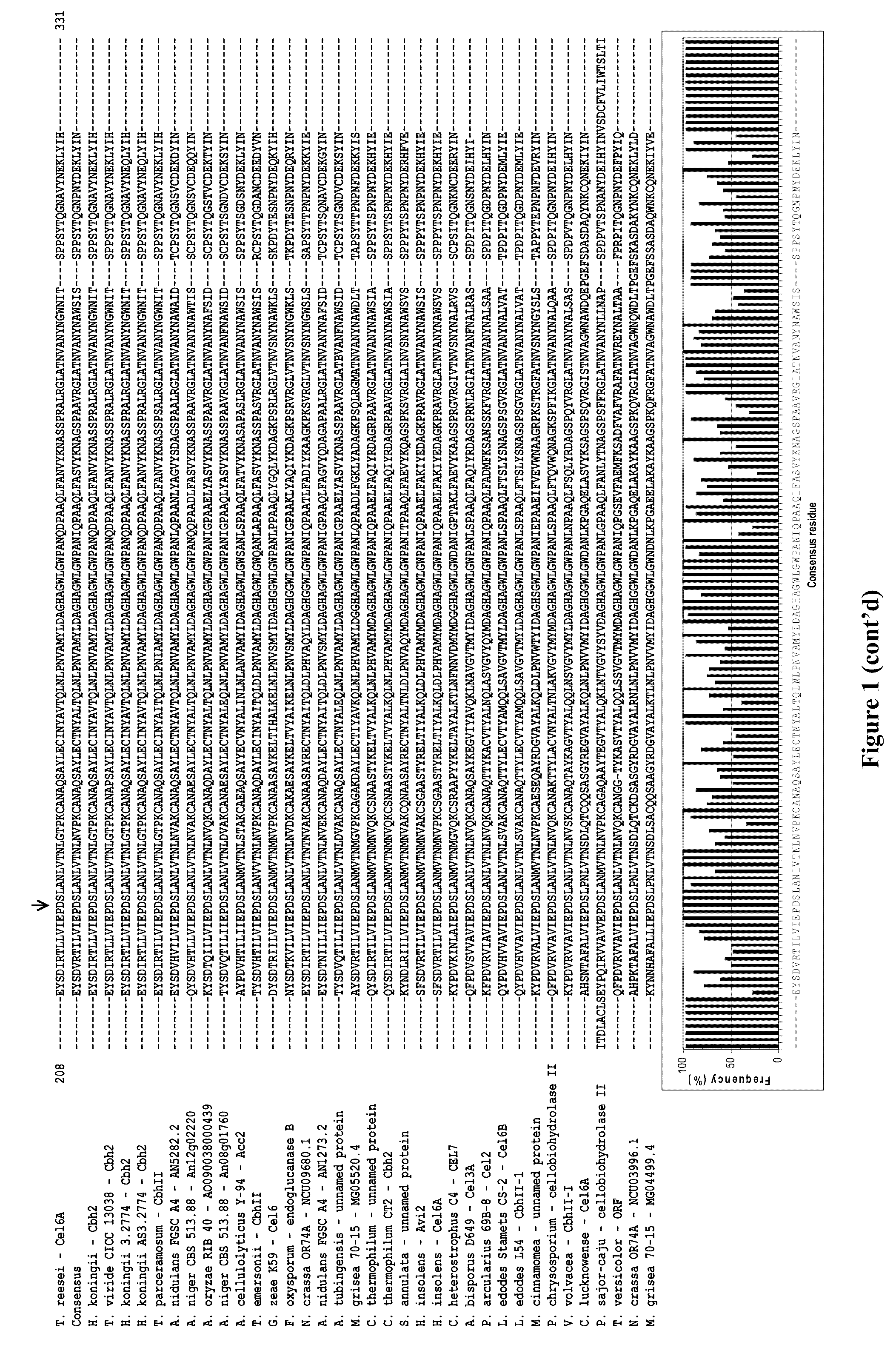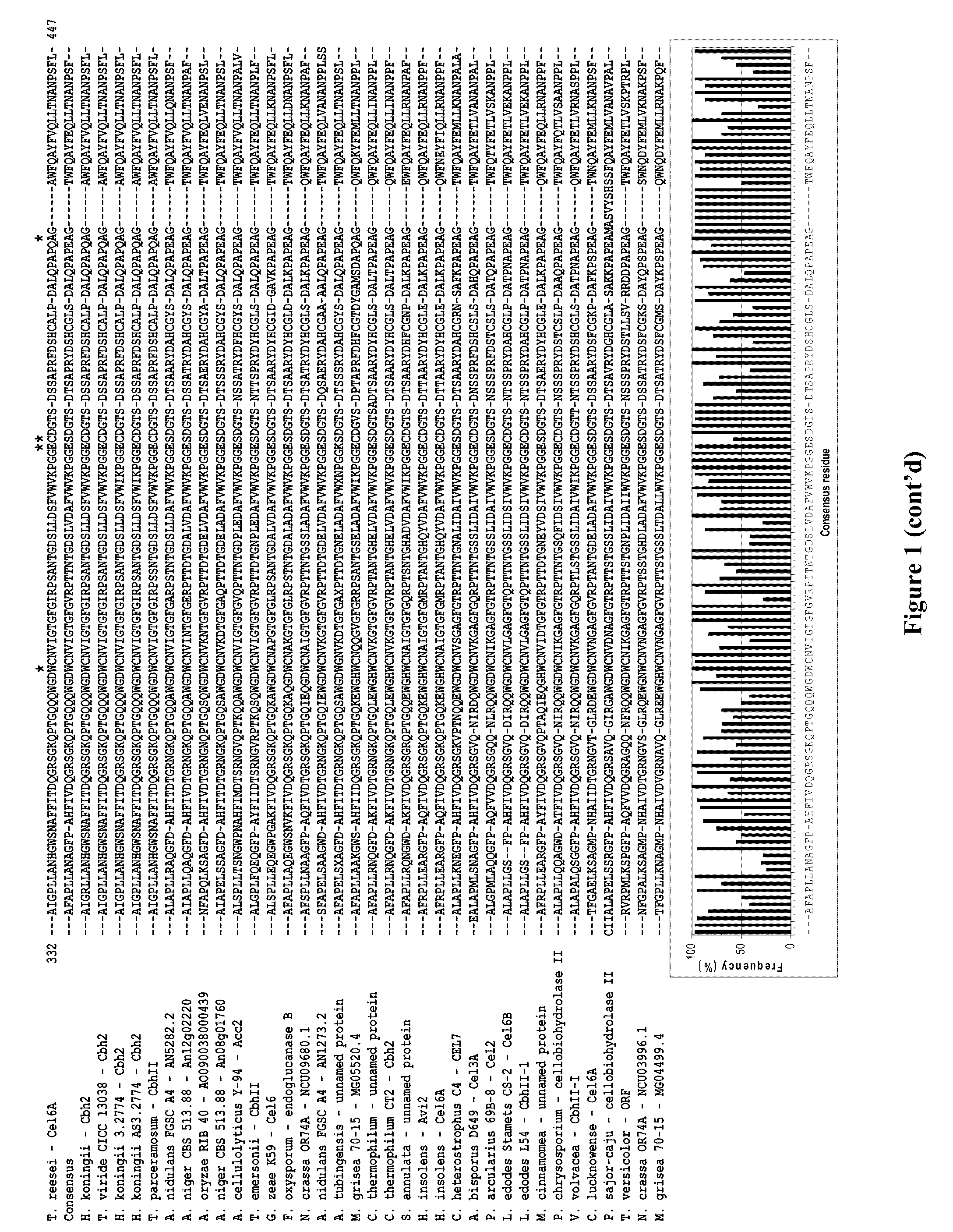Modified family 6 glycosidases with altered substrate specificity
- Summary
- Abstract
- Description
- Claims
- Application Information
AI Technical Summary
Benefits of technology
Problems solved by technology
Method used
Image
Examples
example 1
Strains and Vectors
[0079]Saccharomyces cerevisiae strain BY4742 (MATα his3Δ1 leu2Δ0 lys2Δ0 ura3Δ0 Δkre2) was obtained from ATCC (#4014317). The YEp352 / PGK91-1 vector was obtained from the National Institute of Health. The YEpFLΔGAKpn 10-S413P vector is described in U.S. Publication No. 2008 / 0076152A1. The YEpFLAG-1 vector was obtained from Sigma as a part of the Amino-Terminal Yeast FLAG Expression Kit.
example 2
Cloning of Modified Glycosidase Genes and Transformation of Saccharomyces cerevisiae
[0080]a. Cloning of the TrCel6A-S413P gene into the YEp352 / PGK91-1 vector and transformation of S. cerevisiae BY4742
[0081]In order to facilitate cloning using NheI and KpnI restriction enzymes, the unique NheI site at position 1936 of the YEp352 / PGK91-1 vector was blunted using the DNA Polymerase I large (Klenow) fragment to generate YEp352 / PGK91-1ΔNheI. The TrCel6A-S413P gene was amplified by PCR from YEpFLAGΔKpn10-S413P vector (U.S. Publication No. 2008 / 0076152A1) using primers 5′NheCel6A and 3′BglKpnCel6A. In parallel, the yeast (α-factor leader sequence was amplified by PCR from the YEpFLAG- 1 vector (Sigma) using primers (5′BglAlphaSS and 3′NheAlphaSS) to introduce BglII at the 5′ end and an NheI site at 3′ end of the amplicon. SEQ ID NOS: 47-50 were utilized as primer sequences.
(SEQ ID NO: 47)5′Bg1AlphaSS:5′ACC AAA AGA TCT ATG AGA TTT CCTTCA ATT(SEQ ID NO: 48)3′NheAlphaSS:5′TGA GCA GCT AGC CCT...
example 3
Making Error Prone-PCR Libraries
[0088]Random mutagenesis libraries were generated using two methods: a Mutazyme® II DNA polymerase method and a Mn2+ / biased dNTP mix method. For the Mutazyme® II DNA polymerase method, a series of four independent PCR were performed using 10, 20, 30, 40 ng of YEp352 / PGK91-1ΔNheI-αss-TrCel6A-S413P vector and the Mutazyme® II DNA polymerase with primers YalphaN21 and 3′PGK-term. The amplification was done for 25 cycles. The four PCR products were pooled and diluted to 10 ng / μL. A second PCR mutagenesis step was performed using 30 ng of pooled PCR product with Mutazyme® II DNA polymerase using the same primers for 30 amplification cycles. The YEp352 / PGK91-1ΔNheI-αss-TrCel6A-S413P vector was digested with NheI and KpnI and the empty vector fragment was isolated. This linear fragment and the final amplicon were transformed simultaneously and cloned by in vivo recombination into yeast strain BY4742 (Butler et al., 2003).
[0089]For the Mn2+ / biased dNTP mix me...
PUM
| Property | Measurement | Unit |
|---|---|---|
| Fraction | aaaaa | aaaaa |
| Fraction | aaaaa | aaaaa |
| Fraction | aaaaa | aaaaa |
Abstract
Description
Claims
Application Information
 Login to View More
Login to View More - R&D Engineer
- R&D Manager
- IP Professional
- Industry Leading Data Capabilities
- Powerful AI technology
- Patent DNA Extraction
Browse by: Latest US Patents, China's latest patents, Technical Efficacy Thesaurus, Application Domain, Technology Topic, Popular Technical Reports.
© 2024 PatSnap. All rights reserved.Legal|Privacy policy|Modern Slavery Act Transparency Statement|Sitemap|About US| Contact US: help@patsnap.com










